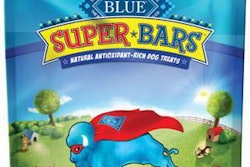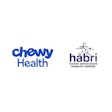Thanks to high-profile acquisitions and competitive clashes, 2014 may go down in petfood industry history as one of the most impactful (not to mention interesting) years. Starting with Nestlé Purina PetCare finalizing its acquisition of Zuke’s in January, this rather wild ride of a year continued with Hill’s Pet Nutrition filing a complaint with the National Advertising Division (NAD) challenging Blue Buffalo Co.’s advertising claims disparaging competitors’ products, particularly those containing by-products. In March, NAD recommended that Blue Buffalo modify its ads.
No sooner had the developments from that commenced (with several twists and turns), when Purina sued Blue Buffalo in May, essentially over the same advertising claims—with the heart of the suit based on Purina saying it had conducted testing that showed Blue Buffalo’s products contained by-products, too. Blue Buffalo quickly countersued for defamation, among other reasons, and the battle was waged. In October, Blue Buffalo released a letter saying it may have received poultry by-product meal mislabeled as chicken meal from a supplier. And so the saga continues.
Meanwhile, in April, Procter & Gamble finally announced the long-rumored sale of its petfood brands, with the surprise buyer being Mars Inc.—in all markets outside of Western Europe (about 80% of the P&G petfood business), presumably because of anti-trust concerns in that region. P&G tied up that loose end in September by selling the remaining 20% to Spectrum Brands/United Pet Group, which, ironically, is based in the US.
And in October, In Vivo NSA, a French agricultural group, announced it is buying Total Alimentos, a longtime petfood powerhouse, one of the top three petfood companies in Brazil and the 13th largest petfood company globally, according to our Top Petfood Companies Database. (Watch for the latest report from the database in the January issue and online at PetfoodIndustry.com.)
The highly competitive nature of the petfood market is one of the threads tying together all this activity—and that competition is heating up as the industry’s seemingly nonstop growth has hit a slowdown in nearly every region. The petfood market in Western Europe has been stagnant for a few years, as many countries in the European Union (including now even the usual economic leader, Germany) face slowing or declining economies. Even Brazil, one of the fastest-rising economies just a few years ago, is now struggling, which could slow growth in the explosive petfood market there and possibly lead to more M&A activity such as with Total.
Packaged Facts’ latest report, Pet Food in the US, 11th Edition (September 2014), indicates only 1.1% US petfood sales growth this year, after 3.7% to 6% increases annually (including 4.7% in 2013) since a 2010 rebound from the 2008–2009 global economic recession. Sales are growing particularly slowly in US mass market channels. Fortunately, petfood sales in other retail channels, namely pet specialty, along with farm/feed and online, are still rising at a healthier rate, and Packaged Facts projects the overall US petfood market to be increasing again by 3% next year, followed by 3.5% to 4.5% growth a year through 2018.
With this recent market volatility, the new year will likely bring even more changes to the competitive landscape—which will do nothing to address slowing growth. The only way to combat that, according to market experts like Packaged Facts and pet retailing executives, is to grow the market by growing pet ownership, which will take an industry-wide effort and collaboration.
















